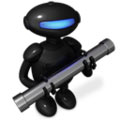 The History of Robotics
The History of RoboticsLearn about some of the fascinating moments that have helped define the history of robotics. This timeline features a number of historic events of the past as well as recent developments that have helped shape the world of robots and technology in general. Read about advances in artificial intelligence, changes in industrial robotics, research into robotic arms used in car manufacturing, mars rovers and much more. Follow the history of robotics from its humble but visionary beginnings right through to the complex robots of today. These robots tie together a range of interrelated areas such as computing, philosophy and engineering into increasingly impressive feats of human achievement.
320 BC
Greek philosopher Aristotle made this famous quote:
“If every tool, when ordered, or even of its own accord, could do the work that befits it... then there would be no need either of apprentices for the master workers or of slaves for the lords.”

1495
Around 1495 Leonardo da Vinci sketched plans for a humanoid robot.
1700 - 1900
Between 1700 and 1900 a number of life-sized automatons were created including a famous mechanical duck made by Jacques de Vaucanson that could crane its neck, flap its wings and even swallow food.
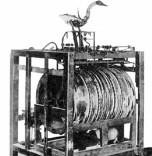
1913
Henry Ford installs the world’s first moving conveyor belt-based assembly line in his car factory. A Model T can be assembled in 93 minutes.
1920
Karel Capek coins the word ‘robot’ to describe machines that resemble humans in his play called Rossums Universal Robots. The play was about a society that became enslaved by the robots that once served them.
This idea is now a common theme in popular culture, ie Frankenstein, Terminator, The Matrix etc.1932
The first true robot toy was produced in Japan. The ‘Lilliput’ was a wind-up toy which walked. It was made from tinplate and stood just 15cm tall.
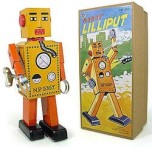
1937
Alan Turing releases his paper “On Computable Numbers” which begins the computer revolution.
1941
Legendary science fiction writer Isaac Asimov writes the short story ‘Liar!’ in which he describes the Three Laws of Robotics. His stories were recompiled into the volume “I, Robot” in 1950 – later reproduced as a movie starring Will Smith.
Asimov’s Three Laws of Robotics:
Asimov’s Three Laws of Robotics:
- A robot may not injure a human being or, through inaction, allow a human being to come to harm.
- A robot must obey any orders given to it by human beings, except where such orders would conflict with the First Law.
- A robot must protect its own existence as long as such protection does not conflict with the First or Second Law.
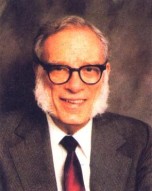
1950
Alan Turing proposes a test to determine if a machine truly has the power to think for itself. To pass the test a machine must be indistinguishable from a human during conversation. It has become known as the ‘Turing Test’.
1954
George Devol and Joe Engleberger design the first programmable robot ‘arm’. This later became the first industrial robot, completing dangerous and repetitive tasks on an assembly line at General Motors (1962).
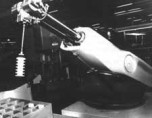
1957
The Soviet Union launches ‘Sputnik’, the first artificial orbiting satellite. This marks the beginning of the space race.
1964
The IBM 360 becomes the first computer to be mass-produced.
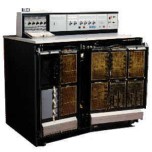
1968
Stanley Kubrick makes Arthur C. Clark's, 2001: A Space Odyssey into a movie. It features HAL, an onboard computer that develops a mind of its own.
1969
The U.S. successfully use the latest in computing, robotic and space technology to land Neil Armstrong on the moon.
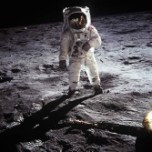
1977
The first Star Wars movie is released. George Lucas‘s movie inspires a new generation of researchers through his image of a human future shared with robots such as the now famous R2-D2 and C-3PO.
1986
The first LEGO based educational products are put on the market and Honda launches a project to build a walking humanoid robot.
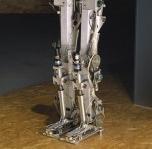
1994
Carnegie Universities eight-legged walking robot, Dante ll, successfully descends into Mt Spur to collect volcanic gas samples.
1997
On May 11, a computer built by IBM known as Deep Blue beat world chess champion Garry Kasparov.
The first Robocup tournament is held in Japan. The goal of Robocup is to have a fully automated team of robots beat the worlds best soccer team by the year 2050.
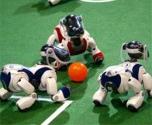
1998
LEGO launches its first Robotics Inventions System.
1999
Sony releases the first version of AIBO, a robotic dog with the ability to learn, entertain and communicate with its owner. More advanced versions have followed.
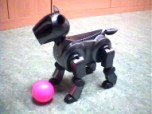
2000
Honda debuts ASIMO, the next generation in its series of humanoid robots.
2004
Epsom release the smallest known robot, standing 7cm high and weighing just 10 grams. The robot helicopter is intended to be used as a ‘flying camera’ during natural disasters.
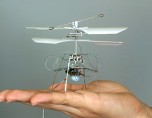
2005
Researchers at Cornell University build the first self-replicating robot. Each ‘robot’ is made up of a small tower of computerized cubes which link together through the use of magnets.
2008
After being first introduced in 2002, the popular Roomba robotic vacuum cleaner has sold over 2.5 million units, proving that there is a strong demand for this type of domestic robotic technology.
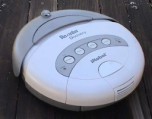







No comments:
Post a Comment